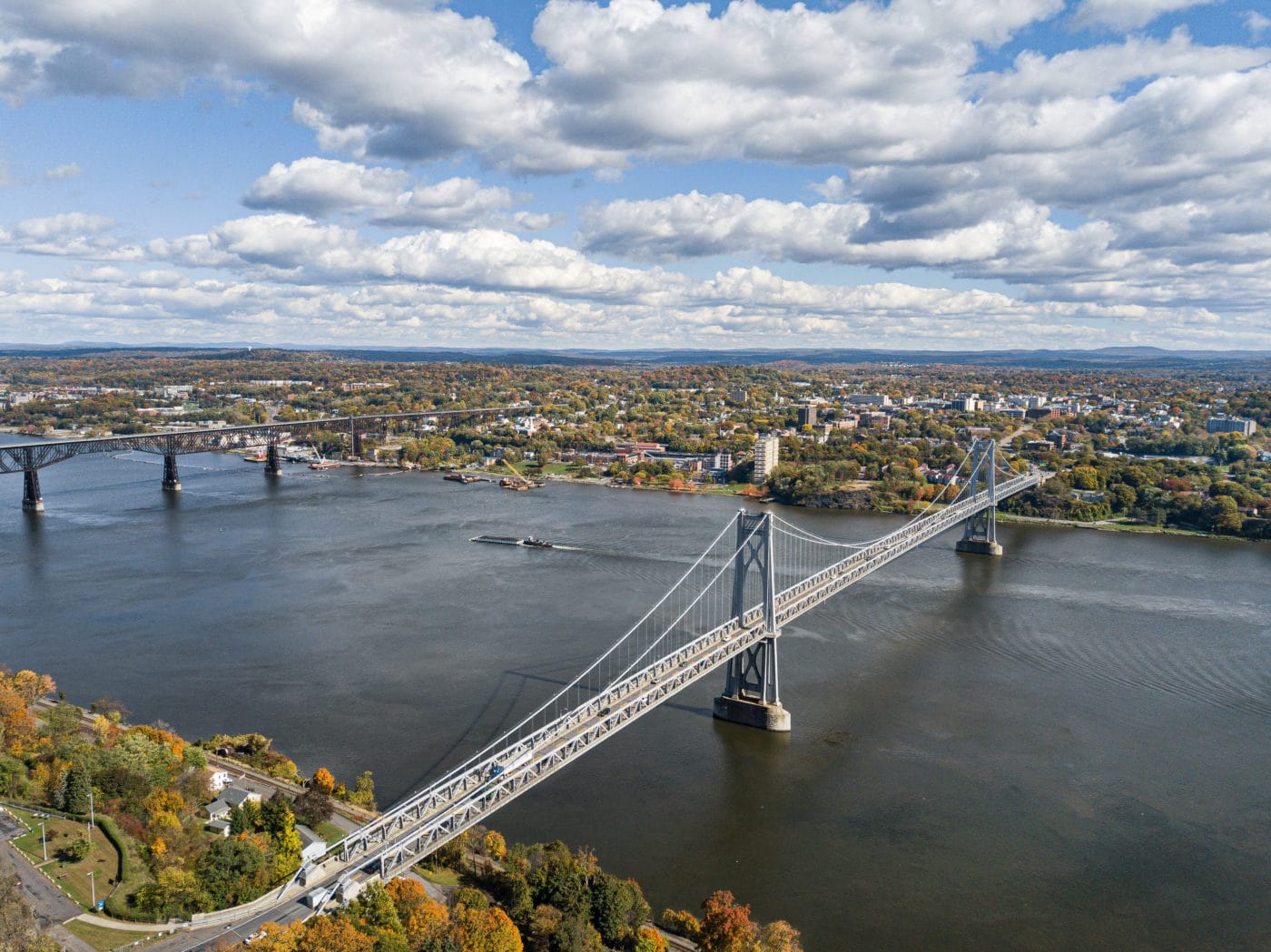
The 20th century brought a rollercoaster of shifts in commerce and social life in the Mid-Hudson:
- Discrimination in the U.S. housing system resulted in efforts such as redlining — denying services (typically financial) to residents of certain areas based on who they are — causing decades of disinvestment and segregation.
- Urban renewal schemes to improve “blighted” neighborhoods and provide better housing conditions instead displaced, rearranged, and divided large communities in these cities.
- The boom and bust from industries such as building supplies and big tech set lasting impacts on the socioeconomic makeup of the Mid-Hudson’s urban areas.
- Access to the river, its tributaries, and vibrant open spaces were unevenly distributed throughout the region.
- Large-scale land use and economic activities left many residents — largely people of color and those in lower-income communities — displaced or isolated in areas with less access to nature such as street trees and urban waterways and parks.
More recently, a real estate boom in the Hudson Valley has been changing the social, economic, and natural landscapes in these river cities. Local and long-term residents — particularly immigrant and low-income communities, and Black, Indigenous, and other People of Color — are disproportionately facing the negative impacts of this changing market. Mounting environmental threats add an additional layer of impact and vulnerability with uneven distribution of urban heat, air quality, flood risk, and access to nature across the region.
These cities have thrived in the past. We believe that through collaboration and a focus on supporting community well-being they can and will thrive again in the future.

